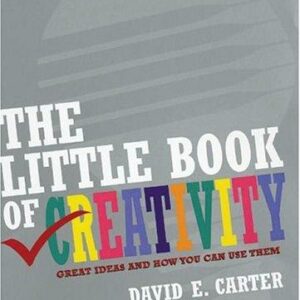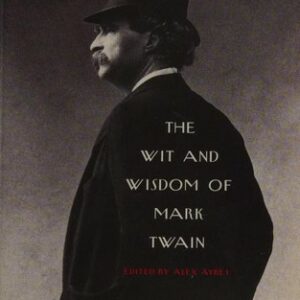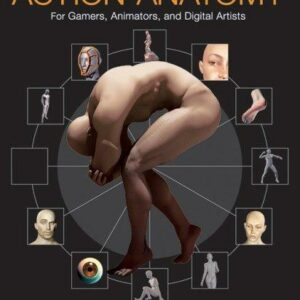Her Space, Her Time
$35.00
| Title | Range | Discount |
|---|---|---|
| Trade Discount | 5 + | 25% |
- Description
- Additional information
Description
“A vital, intimate chronicle of the indomitable women science pioneers who fought to better understand the universe.” —Chris Hadfield, astronaut and #1 bestselling author
One of Canada’s leading physicists celebrates the many, groundbreaking women scientists who came before her—unsung explorers of the cosmos who both discovered the fundamental rules of the universe and challenged social rules, yet whose names remain largely unknown to us.
Her Space, Her Time shares the stories of women in physics and astronomy whose work expanded scientific understanding yet whose accomplishments are often overlooked—creating a thrilling account of scientific discovery, inspirational leadership and persistence in the face of overwhelming challenges. In shaping her narrative around the science that fascinated them and the social context in which they worked, award-winning quantum physicist Shohini Ghose champions these remarkable women’s contributions, which loom even larger given the misogyny and discrimination they faced.
Ghose’s canvas stretches from the 19th century to the present and includes many women whose work led to Nobel Prizes that were ultimately awarded to men. Among this list of impressive scientists: Henrietta Leavitt and Margaret Burbidge, who helped discover the big bang and the cosmic calendar; Anigaduwagi (Cherokee) aerospace scientist Mary Golda Ross, who helped make the Moon landings possible; atom splitter Lise Meitner; Bibha Chowdhuri, who discovered two fundamental particles; and Harriet Brooks—a Canadian physicist whose impact on radioactivity research was compared to Marie Curie’s, but who felt that marriage, not science, was the choice she had to make.
Engaging and inspirational, Her Space, Her Time is threaded through with Ghose’s own experiences in science—women in STEM still face the same kind of challenges her subjects encountered—and driven by the imperative to make the invisible visible, ensuring that the names of these women who pursued science against all odds will never be forgotten.”This book is a vital, intimate chronicle of the indomitable women science pioneers who fought to better understand the universe. Shohini Ghose, an accomplished physicist herself, not only brings these women’s stories into the light, she brings them to life.” —Chris Hadfield, astronaut and #1 bestselling author
“Her Space, Her Time is a captivating book that honors and highlights a wonderful selection of women who broke boundaries and challenged conventions in science and society.” —Donna Strickland, professor of physics, University of Waterloo, and co-recipient of the 2018 Nobel Prize in Physics
“This carefully researched collection of important scientific contributions by women will inspire a new generation of young women to consider a career in science.” —Arthur B. McDonald, Queen’s University Gray Chair Emeritus, 2015 Nobel Physics Laureate
“An engaging and thoroughly researched work that reveals the many vital contributions women scientists made to the space age. Even serious students of this history are sure to be surprised by the missing pieces Ghose reveals.” —Kathryn D. Sullivan, scientist, astronaut, explorer
“Her Space, Her Time certainly fulfills its subtitle. The seven chapters are highly informative, each one having dramatic moments and discoveries. Ghose skillfully weaves together accessible descriptions of astrophysical concepts with the personal lives of the women scientists. I recommend this book as required reading for anyone teaching astronomy and astrophysics, as well as those with an amateur interest. . . . From the first chapter, Ghose shows women making amazing scientific discoveries while working within a society set up to exclude them. . . . By writing this book, Ghose is doing the work of rectifying some of these past wrongs.” —American Scientist
“A disdain for misogyny past and present shines through in Shohini Ghose’s rich history of women’s underappreciated contributions to astronomy and physics . . . Her Space, Her Time [has] made an important contribution to this chain of histories, one that will no doubt lead to a clearer view of the science that lit up our universe.” —New Scientist
“Her Space, Her Time will likely draw comparisons to other biographies of women scientists and mathematicians like Hidden Figures . . . and The Glass Universe . . . But Ghose’s book, with its unique structure and writing style, earns its own space (pun intended) in the genre. . . . Her Space, Her Time provides a digestible, informative starting point for making [women] scientists visible.” —Symmetry Magazine
“This book is truly for everyone, and I can’t overstate how much I enjoyed it.” —BBC Sky at Night Magazine
“Engaging. . . . Ghose explains complex concepts with clarity, understandable for the non-scientist, and the book is a passionate look at the women who’ve pushed our understanding forward in [science] . . . making a strong case for women’s place in science now.” —Boston Globe
“Unlike many scientists, Ghose is a smooth and polished prose stylist who knows how to reach lay readers.” —Vancouver SunSHOHINI GHOSE is a professor of physics and computer science at Wilfrid Laurier University, the founder and director of the Laurier Centre for Women in Science (WinS) and the NSERC Chair for Women in Science and Engineering. She is the recipient of several awards, including a TED Senior Fellowship and selection to the College of the Royal Society of Canada; her TED Talk on quantum computing has drawn 4.9 millions views. In 2019, she was among 25 women scientists worldwide featured in a UNESCO exhibit in Paris, and was the first Canadian member of the Working Group on Women in Physics of the International Union of Pure and Applied Physics. Ghose is the first person of colour to be elected president of the Canadian Association of Physicists.INTRODUCTION
Have you ever tried counting stars on a warm summer night? From the balcony of my downtown apartment, in the glare of the streetlamps, sometimes I can count them on the fingers of two hands. But if you find yourself far from city lights, say, in the Gobi Desert or on Mount Everest, your tally could be a few thousand. For every star you see, many trillions remain invisible to your naked eyes. But they are there, shining steadily, and even though they are invisible to us, we know a lot about them.
We know that all those multitudes of stars are made of mostly hydrogen and helium. We know they can be classified according to their temperature. We know how to measure the distances to those tiny points in the sky, and we know how they live and die, synthesizing the elements of life deep in their cores. We know how long ago the universe came into existence, when the first stars were born, and we even have some inkling of how the universe will end.
All of this knowledge, and many other fundamental insights that transformed physics and astronomy, came from discoveries made by women. From the earliest days of scientific exploration, they were there, shining a new light on the universe, even when they were eclipsed by the brighter halos of the men they worked with. These women looked inside stars and inside atoms, discovered new elements and new particles, and fought for science and for justice and for future generations. This book is about these unsung explorers of the cosmos, invisible stars here on Earth who made the unseen universe visible.
Of the countless stars out there, a vast number are not solitary like our Sun. Instead, they are paired in a binary system, each stellar couple locked together in a gravitational embrace. It’s rather comforting to think of them holding on to each other in the vast emptiness of space, twirling around each other in a beautiful cosmic waltz. One special binary couple is in the constellation called Niska (the Goose) by the Cree people of North America; the Greeks called it Cygnus, the Swan. One of the pair is a blue supergiant star. The other is a black hole, an invisible object so massive and dense that even light cannot escape its gravitational pull. So how do we know that it is there? The answer lies in watching its partner.
Imagine a couple waltzing in a ballroom, the man visible, but the woman invisible. You see him holding her invisible hand and you see how he moves when she pulls him close. You know she is there. The blue supergiant reveals its unseen partner in the same way, its orbital dance revealing the tug of a hidden companion. Cygnus X-1 was the first black hole to be discovered in this way, back in 1971. Seeing an object that should be impossible to see caused quite a splash. Many believed that such an object could not even exist. Even Stephen Hawking bet that the discovery was a mistake. He was happy to be proved wrong.
As a physicist, I have always been fascinated by black holes, which remain one of the ultimate mysteries in physics and astronomy. But their discovery also held a deeper meaning for me—the universe was showing us that nothing is truly invisible.
Like other women scientists who came before me, I have some experience with being invisible. When I think back to my time as a young woman pursuing my bachelor’s degree at an American university, the words I remember most clearly are “Good morning, gentlemen!” That’s how one of my professors regularly greeted my class, oblivious to the lone woman in the room. I would quip that my superpower had to be invisibility because joking prevented me from truly disappearing.
I was not too surprised that I went unnoticed in my physics classroom. In high school in India, I’d already begun to realize that women were scarcely to be found in physics textbooks (clearly, they too possessed my superpower). The sole exception was Marie Curie, the only person of any gender to win two Nobel Prizes in different sciences—physics and chemistry. It took her winning two Nobels to make visibility her superpower. My friends and family also had not heard of any other women physicists.
I now live and work in Canada, and here, too, women in science remain unseen to a strikingly large percentage of the population. In 2019—the year after my Canadian colleague Donna Strickland won the Nobel Prize in physics—a poll found that more than 52 percent of Canadians could still not name a single woman scientist, let alone a woman physicist. When asked to picture a computer scientist, a whopping 82 percent imagined a man. A 2017 US study showed that less than 1 percent of the people surveyed could name a living woman scientist. Roughly, two out of three high school students in the United States (and nine out of ten students identifying as men) portray a man when asked to draw a scientist.
As I continued my studies in physics, I found that every equation in physics and astronomy reveals some wondrous aspect of nature—the orbits of the planets free falling around the sun, or the dancing probability waves of atomic structure, or the luminous rainbows after thunderstorms. None of those equations requires a person of a particular gender to solve them and none of the solutions has any gender parameters in it. The more physics I learned, the more awestruck I was by the universe and the more humbled by how little we still knew. How incredible that our tiny human brains, less than a billion-billion-billionth the size of the universe, could comprehend any part of its majesty and beauty. My sense of wonder was certainly not limited by my gender, and surely many other women before me had been just as inspired.
But my physics textbooks remained full of the exploits of brilliant men: Einstein, Newton, Galileo, Schrödinger, Bohr, Rutherford, Maxwell, Tesla, Faraday, Heisenberg, Planck . . . there were plenty. I completed my undergraduate program, but no woman taught any of my physics courses. A tiny voice inside my head that would not be quiet kept wondering if I had the wrong combination of chromosomes to pursue physics.
I asked friends and other scientists why there were so few women in the field. Some told me that women were better suited for fields that involved nurturing, as if the laws of the universe had nothing to do with nurturing life on Earth. Others felt women lacked the confidence and courage to explore new frontiers in physics and astronomy, or the requisite drive and the energy. Yet others suggested that women might need some extra help with the required technical skills. Or that women can’t be scientific geniuses. Girls just aren’t naturally built to do really difficult mathematics, they implied. Fix the women not the field, they generally seemed to advocate.
I turned to science for further answers. Contrary to common belief, study after study has found that girls perform just as well as boys in math and science. (Researchers have mostly not ventured beyond the gender binary in these studies.) Regardless of gender, infants have similar counting and spatial skills from birth. No brain scan has ever found wiring in boys’ brains that makes them more capable of doing mathematics than girls. In recent years, girls in high school in many countries are outperforming boys in math and science, a trend that upends the gender myth. Clearly, breasts and other female body parts are not impediments to doing physics.
So, why are there so many men in physics? The fault lies in ourselves. That’s because gender, and so much else that divides us, is a social construct. We made it all up. We humans put ourselves in boxes labeled with identities and genders and roles. We associated physics and astronomy with masculinity, mistaking physical differences between the sexes for intellectual differences. “Objectivity” and “rationality,” long considered the domains of men, became the pillars of scientific thought, privileged over imagination and creativity and passion—constraining science as well as men. Political and religious institutions historically controlled by men were the early gatekeepers of science; “tradition” and “culture” became additional labels used to keep women out. Some argued that women’s reproductive organs would be damaged by intellectual pursuits or that these female attributes were the origin of the “irrationality” and “hysteria” that made women unfit for science. Even now, when such ideas have been thoroughly debunked, their influence lingers. Among women, too. Globally, only about one in five undergraduate students in physics today is a woman. In the United States, out of almost 60,000 PhDs in physics awarded between 1972 and 2017, 90 were awarded to Black women. In Canada, at the time of this writing, there are no Black women professors in physics and astronomy. Throughout history, preconceptions about gender roles and intellectual abilities have worked to erase those who did not fit the mold, writing them out of the story of science.
But labels can be changed. Rather than fixing the women, what if we could fix the physics and astronomy box? We could relabel it and expand and improve it, or just throw out the labels entirely. In these pages you will find many reasons to rip off those labels.
Women have always played a role in unraveling the secrets of the universe. They did not need the permission of men to be curious. They fought for the right to enter the world’s top universities, to become researchers and scientists. They found ways to see the hidden laws of nature, even as they themselves remained unseen. Their work often led to Nobel Prizes being awarded to their male colleagues. Their own contributions were invariably devalued or discounted, or attributed to men, a phenomenon so common that it’s been called the “Matilda effect” after the nineteenth-century activist Matilda Gage, who first pointed it out. But they persisted.
This is not a book of biographies. A single book cannot possibly do biographical justice to all the women I’ve included here. I have chosen, instead, to shape these chapters around their science and the aspects of their stories that resonate with me most as a woman physicist today. I have learned a great deal from exploring their lives. The physicist in me is always looking for patterns and relationships in the world around us. These women’s personal and professional journeys are full of patterns too, in the scientific and social context in which they worked, the challenges they overcame, and the skills and strengths that helped them succeed. The women in each chapter are connected by the common scientific questions they explored as well as the common barriers they faced. Together, they impacted science and society in multiple ways. I want to tell you their collective story.
Almost all the women were rule breakers and trend setters. They made ground-breaking discoveries by extending the known laws of physics. They were not deterred by institutional policies or assumptions about the role of women in science. Cecilia Payne, for example, discovered the chemical composition of the universe and also compelled Harvard to discover that women can be astronomy professors. These scientists found ways to address structural and social barriers, and in doing so made it clear how unacceptable those barriers were. They forced institutional and cultural change.
Although the women were often underestimated, their radical, outside-the-box work led to spectacular discoveries. Lise Meitner unraveled the secret of nuclear fission and Bibha Chowdhuri’s work led to the discovery of not one but two fundamental particles in nature. These remarkable scientists call out to us to rethink the stereotype of the science genius.
Above all else, these women were passionate about their work as scientists. They made measurements and gathered data, discovered new fundamental laws and relationships, designed novel instruments and ground-breaking experiments, identified unknown types of matter, developed new theories, and kickstarted entire fields of research. They had an impact on so many different areas of physics and astronomy that it is impossible to include an in-depth discussion of every scientific topic they contributed to, much as I would like to. Instead, I have focused on the big questions that each woman explored, the scientific context and importance of the problems, what the women’s findings were, and what influence they had (while including as much physics and astronomy as needed to appreciate their spectacular contributions). Each of their journeys is a thrilling story of scientific discovery, full of innovation, inspirational leadership, and persistence in the face of overwhelming challenges.
In writing about these women, I struggled with describing them as “women scientists.” After all, Einstein and Newton are never called “men scientists.” Like the men, these women deserve to be seen as brilliant scientists, without the need for a gender qualifier. But the fact is that the term “scientist” is gendered, even today. When there is no explicit preceding adjective, it still mostly defaults to a man (I am often mistaken for a man by those who read my scientific articles). That’s why men in science get to leave out their gender in their job description.
The same applies to race, and ability, and a multitude of identities that have a default setting in science. But these identities do matter, impacting who gets to do science, what kind of science is supported, and who gets access to the outcomes. So I’ve chosen to stick with “women scientists” here, as a reminder that gender does matter, that there still is a gendered default setting in science, and that these scientists succeeded despite being women in a field dominated by men. (While “female scientist” may sound better grammatically, I’ll avoid that term in order to focus on gender and not biological sex.)
For every woman you meet within these pages, there are many more who have been part of humanity’s journey of discovering the laws of nature. There are some whose names are lost forever. Their scientific contributions nevertheless remain a part of the story of physics and astronomy—a lasting footprint left by these invisible scientists.
In 2019, scientists revealed the first ever image of a black hole—one of the greatest achievements in the history of scientific achievement. Yes, they had figured out how to take a photograph of an unobservable object that traps light and was not supposed to exist. This image was not an indirect inference of an invisible dance partner, but a reconstruction of a supermassive black hole at the center of galaxy M87. So how did they do it? Could light actually escape from a black hole? Not so. The laws of physics still apply. But scientists found a way around the problem. Human beings of all genders and backgrounds working together across the world made the impossible possible. They observed the light emitted from the hot swirling disk of material surrounding the black hole, constructing an image of the dark center by observing its bright edge. The result was a doughnut- shaped image of light encircling the borders of invisibility. That historic, eye-opening image of a hidden object millions of light-years away from Earth went viral within minutes of its release.
That’s the thrill of seeing the invisible.CA
Additional information
| Weight | 17.4 oz |
|---|---|
| Dimensions | 0.9800 × 6.3100 × 9.2800 in |
| Imprint | |
| Format | |
| ISBN-13 | |
| ISBN-10 | |
| Author | |
| Audience | |
| BISAC | |
| Subjects | biographies of famous people, Physicists, mathematics, books for teachers, history of science, science gifts, autobiographies, science book, feminist books, books for women, biographies and memoirs, inspirational books for women, biographies of women, about women, science books for adults, books about physics, women of colour, history, STEM books, space books, biographies, science books, books about space, women in history, women in STEM, women scientists, SCI034000, innovation, biography, science, BIO022000, feminism, women |











